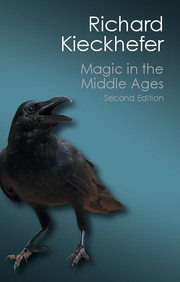Book contents
- Frontmatter
- Contents
- List of illustrations
- Foreword to the Canto edition
- Preface
- 1 INTRODUCTION: MAGIC AS A CROSSROADS
- 2 THE CLASSICAL INHERITANCE
- 3 THE TWILIGHT OF PAGANISM: MAGIC IN NORSE AND IRISH CULTURE
- 4 THE COMMON TRADITION OF MEDIEVAL MAGIC
- 5 THE ROMANCE OF MAGIC IN COURTLY CULTURE
- 6 ARABIC LEARNING AND THE OCCULT SCIENCES
- 7 NECROMANCY IN THE CLERICAL UNDERWORLD
- 8 PROHIBITION, CONDEMNATION, AND PROSECUTION
- Further reading
- Index
6 - ARABIC LEARNING AND THE OCCULT SCIENCES
Published online by Cambridge University Press: 05 October 2014
- Frontmatter
- Contents
- List of illustrations
- Foreword to the Canto edition
- Preface
- 1 INTRODUCTION: MAGIC AS A CROSSROADS
- 2 THE CLASSICAL INHERITANCE
- 3 THE TWILIGHT OF PAGANISM: MAGIC IN NORSE AND IRISH CULTURE
- 4 THE COMMON TRADITION OF MEDIEVAL MAGIC
- 5 THE ROMANCE OF MAGIC IN COURTLY CULTURE
- 6 ARABIC LEARNING AND THE OCCULT SCIENCES
- 7 NECROMANCY IN THE CLERICAL UNDERWORLD
- 8 PROHIBITION, CONDEMNATION, AND PROSECUTION
- Further reading
- Index
Summary
As we have seen, the common tradition of magic was by no means uniform, but varied its themes from time to time and from place to place. We have also seen how the rise of the courts as cultural centers around the twelfth century brought something new, which existed alongside the older forms of magic. A far more basic change was introduced in the twelfth century, however, with the rise of a new kind of learning that included scientific astrology and alchemy. The common tradition itself had incorporated elements of classical lore: remedies from Pliny or from Marcellus Empiricus, for example, were included in medieval leechbooks. But the new learning claimed to be more deeply rooted in ancient philosophy and science, and presented itself in a more rigorous and sophisticated guise. Like most forms of scholarship it lent itself to popularization, and thus the boundaries between the common tradition and the new magical learning did not remain rigid. Yet the fact remains that in the twelfth century something new was introduced, however complex its relationship with the older tradition became.
One qualification must be made at once. The people who studied astrology and alchemy in the twelfth and following centuries would not usually have thought of themselves as magicians.
- Type
- Chapter
- Information
- Magic in the Middle Ages , pp. 116 - 150Publisher: Cambridge University PressPrint publication year: 2014



